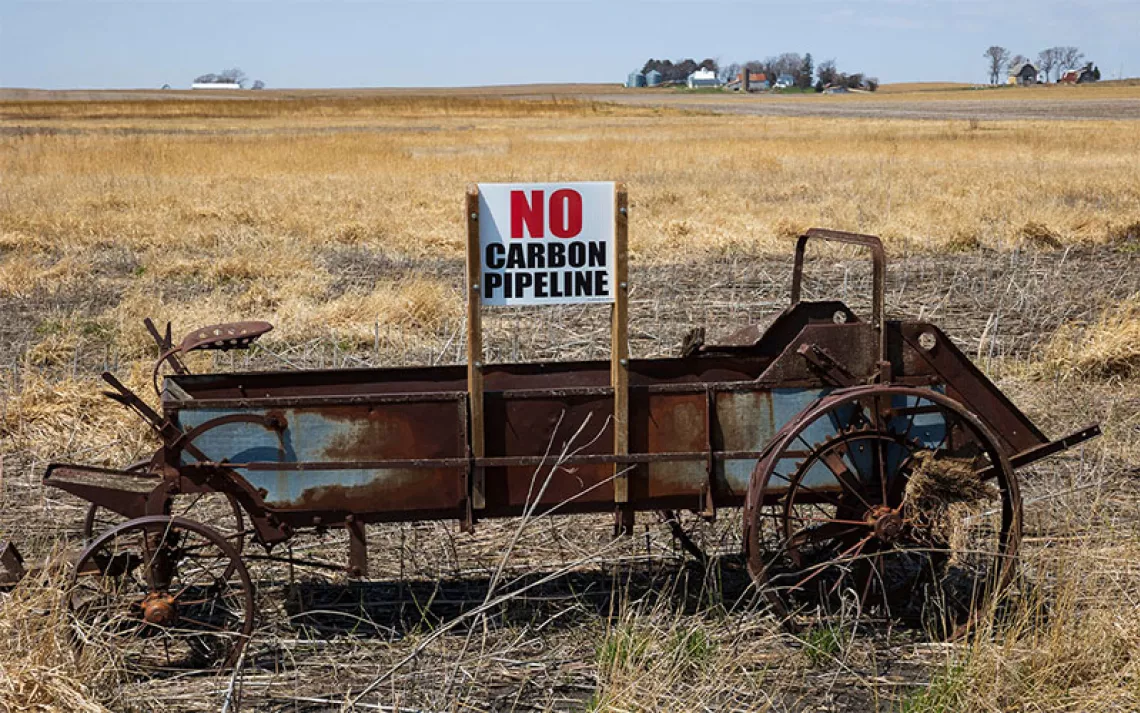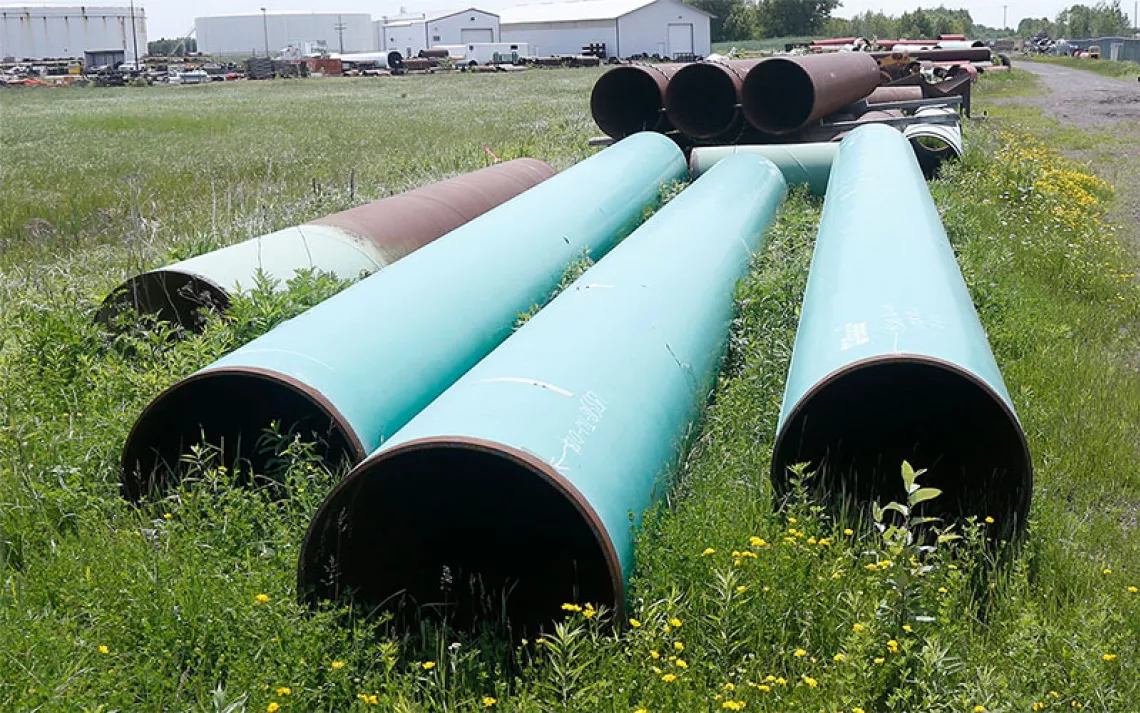FERC Commenting Sessions Trade Efficiency and Transparency
Residents take issue with review process for Atlantic Coast Pipeline

Photo by bizoo_n/iStock
A crowd had gathered in the waiting area. Those who had been assigned numbers sat in rows, waiting their turn to speak. When the opportunity to comment on the Atlantic Coast Pipeline arrived, each was instead ushered into a private room, seated next to an audio recorder, and given three minutes to make a statement.
“This isn’t democracy,” says Mike Tarpey, a philosophy professor at Tidewater Community College in Virginia who’d shown up expecting a town hall meeting. “This is a total sham.”
The public commenting session in Suffolk was one of 10 held in the three states the pipeline, if it happens, will transect: North Carolina, Virginia, and West Virginia. Each of the sessions, scheduled between February 13 and March 2, was convened to solicit public input on the Draft Environmental Impact Statement FERC released this past December.
The 600-mile Atlantic Coast Pipeline is slated to carry fracked natural gas from the Marcellus Shale to gas-burning power plants in eastern Virginia and southern North Carolina. It has proven to be a divisive issue—pitting those concerned about the environmental implications and potential use of eminent domain against those who hope the pipeline will lead to energy independence and job growth.
FERC, the agency responsible for certifying the pipeline, once ran the commenting sessions more like traditional town halls, in which citizens signed up and took turns speaking publicly. In the summer of 2015, all of that changed.
The new format was the result of growing dissatisfaction with the efficiency of the town hall sessions, says Tamara Young-Allen, a FERC spokeswoman. The complaints came to a head during the initial hearings in Virginia. Senators were contacted. FERC responded. On August 11, 2015, FERC held a joint scoping session in Port Isabel, Texas, focused on three liquid-natural-gas projects. It was the first time the one-on-one format was used.
“With the availability of more than one court reporter and FERC staff member per public comment session . . . and with longer venue hours, more people have had a chance to have their say with shorter wait times,” says Tamara Young-Allen. She noted that for a similar gas pipeline project, only 154 speakers managed to comment during the 10 town hall sessions held in 2015. “By contrast, FERC heard comments from 632 speakers during the 10 one-on-one comment sessions held for the Draft EIS for the Atlantic Coast [Pipeline].”
Under the new system, comments are taken in private, with only a court reporter and one or more FERC representatives present. Transcripts of the comments are posted online two to three weeks later; anyone wishing to see the comments sooner can purchase them from the contracted court reporter, at nearly $4 per page.
Efficiency seems to be the goal and, given the change, FERC is happy with the results. But not everyone shares that view.
“FERC is probably meeting the public participation requirements in the way the ‘listening sessions’ are designed,” says David Sligh, an environmental attorney and conservation director for Wild Virginia, “though these events clearly don’t give the public the chance to hear others and exchange information and opinions like public hearings would.”
The National Environmental Policy Act (NEPA) lays out the rules regarding not only how FERC solicits public input, but also how FERC conducts environmental review and needs analyses for pipeline projects. Specifically, the law requires FERC to “make diligent efforts to involve the public.”
Some groups in the region, led by the Sierra Club's Virginia Chapter, haven’t been satisfied with FERC’s implementation of the NEPA requirement. They’ve chosen instead to hold their own sessions simultaneously.
“For every meeting held in Virginia, we [arranged] for an alternate meeting location in the same building or right next to the building where FERC was having their hearings,” says Kirk Bowers, a conservation program coordinator for the Virginia Chapter. “And that was to provide a warm and welcoming atmosphere for people to come in and talk about pipelines, to write comments, to share information and facts.”
“Some people had to wait two or three hours before their number was called for the meeting. So we provided [another] option. And we wanted to do that to let people know that we were there and that we did not agree with what FERC was doing.”
Coordinating the alternate meetings wasn’t always easy. In Suffolk, the session venue refused to rent a room to Bowers’s group—at FERC’s request—relegating the alternate hearing to the sidewalk. Bowers faced similar opposition at the Farmville, Nelson County, and Monterey meetings.
Another group, the Hampton Roads Justice Network, sought to make its voice heard at the Suffolk session despite the new rules on private commenting. Impromptu speakers addressed the small crowd gathered in the lobby amid protesters holding anti-pipeline banners. Several Suffolk police officers were called in to disperse the crowd under threat of arrest.
The session held in Nelson County, where much of the opposition to the Atlantic Coast Pipeline in Virginia has been focused, invited less drama. Though some of the attendees were just as unhappy about the private nature of the session.
“This format is a great way for them [FERC] to meet the NEPA requirement while avoiding the public’s disdain,” said Diane Easley, a Nelson County resident who had shown up with her father, an 89-year-old WWII veteran, to express concern about the pipeline.
At one of the first sessions held for the Atlantic Coast Pipeline in North Carolina, press were barred not only from hearing the comments, but also from interviewing or photographing commenters in the waiting area. On February 23, the Society of Environmental Journalists wrote an open letter to the FERC commissioners, expressing concern over the closed-door nature of the listening sessions, claiming that the format “effectively suppresses the news about the content of the meeting by divorcing it from the immediacy of the event itself.”
For now, FERC officially has no comment. But Young-Allen did confirm that FERC plans to continue using the one-on-one format in the foreseeable future, leaving the question unanswered: What measure of transparency is the public willing to sacrifice for a more efficient process?
What You Can Do
Stop the Atlantic Coast Pipeline: The 590-mile Atlantic Coast Pipeline is quickly moving forward, and the Federal Energy Regulatory Commission (FERC) is again acting like a rubber stamp for the gas industry -- even as Dominion and Duke fail to prove there’s demand and need for the gas, which is required by law.
 The Magazine of The Sierra Club
The Magazine of The Sierra Club



